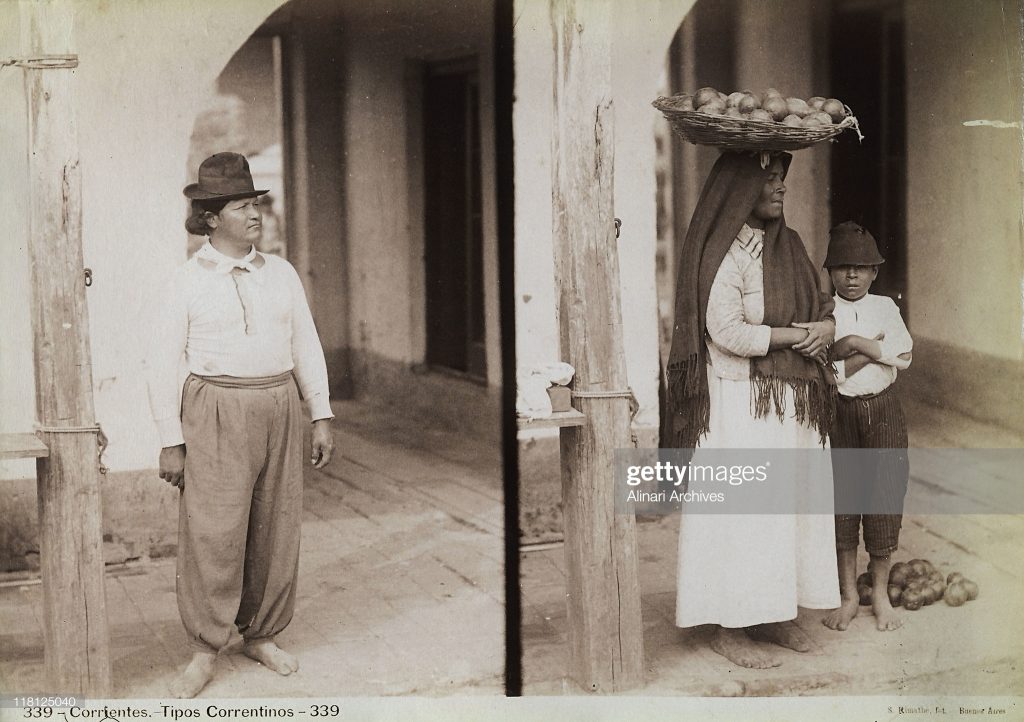
This picture portrays a family in Buenos Aires from around 1890. This is a representation of race relations in Argentina during the Industrial Revolution. As Chasteen describes, despite many transformations, neither Latin America’s subordinate relationship to Europe… created by colonization had changed” (194). The Argentinians portrayed here are most likely a mix of cultures and people. As non-white and non-European they did not prosper from the Industrial Revolution like those at the top of the hierarchy. Their lives and status pretty much remained the same throughout this period. As Buenos Aires was, “building splendid avenues on the Parisian model, families like depicted here were trying to keep up with market demands for specific crops that would be sold internationally. This region of Argentina would have produced large numbers of sheep and cattle to be shipped. With the Industrial Revolution came the first refrigerate ship, which allowed Argentine beef to become popular in Europe, thus spurring the economy (197). The individuals here show the ways in which Argentina did not really change that much for those of color and low social status. The growing middle class and upper class saw the benefits from neo-colonialism much more than others did.
This picture was taken in order to capture the realities of Argentine life for most of the population. It is intended for the international community that would have most likely seen Buenos Aires simply as a bustling city experiencing economic growth at rapid speeds when in reality life changed drastically for only a small percentage of the population.
Chasteen, John Charles. Born in Blood and Fire: A Concise History of Latin America. New York: W.W. Norton & Company, 2016.
Portrait of a family of Corrientes, Buenos Aires, Argentina – circa 1890: Portrait of a family of Corrientes, Buenos Aires (Photo by S. Rimathé/Alinari Archives, Florence/Alinari via Getty Images)
